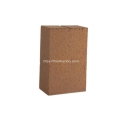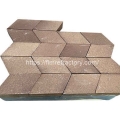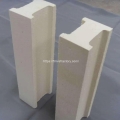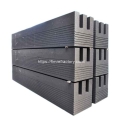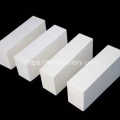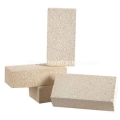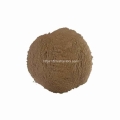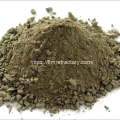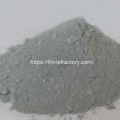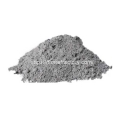- Performance. Innovation. Worldwide. Your trustworthy Refractories Manufacturing Partner--Fireramo
- +86 175 3769 7777
Contact
Contact us on WhatsApp
High Quality Refractory Bricks
Insulation Bricks for Sale
Monolithic Refractory
Common ways of damaging ladle nozzles
The sliding nozzle consists of an upper & lower nozzle and an upper & lower sliding plate. It is a key functional component that controls the flow of molten steel from the ladle to the tundish or from the tundish to the crystallizer. Among them, the sliding plate is the key carbon composite functional component in the sliding nozzle system, which has the function of controlling and injecting the steel flow. At present, the ordinary ladles mainly use aluminum carbon sliding plates, while the large refined ladles mainly use aluminum zirconium carbon sliding plates.

The service condition of sliding plates is extremely harsh, so most of them are damaged after being used several times. The damage methods mainly include:
Thermomechanical Erosion
The temperature difference before and after the sliding plates is used is as high as 1400°C, forming extremely strong internal stress inside the sliding plates, leading to the formation of large cracks, and the repeated erosion of the material inside the cast hole of the sliding plates by molten steel will cause the material to peel off.
Thermochemical Attack
Various elements (oxygen, iron, manganese, calcium, etc.) in molten steel or slag will react with various components in the sliding plates, causing chemical erosion of the sliding plates, deteriorating the material structure, and ultimately significantly reducing the material’s thermomechanical strength and corrosion resistance.
Wear and Stick Steel
The viscosity of some special steel types (stainless steel and steel containing titanium and chromium) is higher than that of ordinary carbon steel, which is prone to steel sticking, causing wear and tear on the sliding plates and greatly reducing the service life of the sliding plates.
Refractory solutions for industry
Refractories for furnace lining
Refractories for Electric Furnaces
It can be seen that the sliding plate should not only have high mechanical strength and thermal shock stability, but also should have good erosion resistance and peeling resistance. At the same time, in order to cope with the increasingly demanding new requirements for steel smelting, especially to meet the smelting needs of calcium-treated steel and clean steel, special attention should be paid to reducing the carbon content in the sliding plates while ensuring sufficient service life.
Specializing in refractory materials for over 20 years, we provide professional refractory solutions for the global high temperature industry.
Related Posts:
- Causes and solutions to cracking of castables after baking
- Enhancing the Medium Temperature Strength of Refractory Castables
- Ways to ensure the accuracy of refractory brick acceptance results
- Acceptance inspection after cement kiln construction
- How to choose and use Kiln Furniture for Firing Ceramics
Theme By Fireramo
